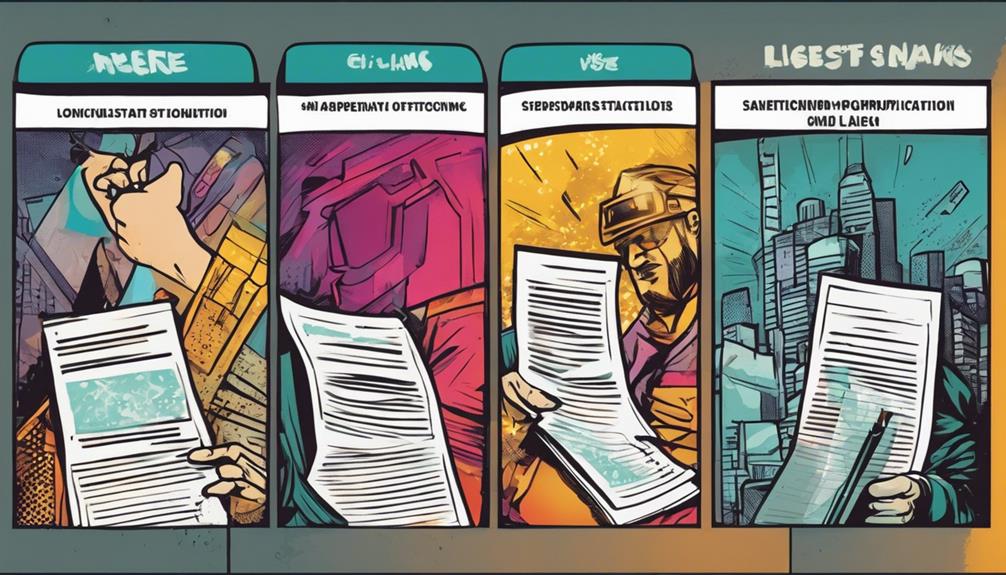Renting might seem like throwing money away, but it often offers flexibility and fewer upfront costs. However, you may spend more long-term since rent prices can rise faster than inflation, and you miss out on building equity. Buying can build wealth through asset appreciation, but it also involves hidden costs like maintenance, property taxes, and higher monthly payments, especially with current mortgage rates. To see a full picture, explore what’s really involved in both options.
Key Takeaways
- Renting offers lower upfront costs and greater flexibility, but may lead to higher long-term expenses due to rising rents.
- Buying builds equity and offers tax benefits, potentially making it more cost-effective over time despite higher monthly payments.
- Hidden costs of homeownership, like maintenance and taxes, can significantly increase overall expenses.
- Market trends and high mortgage rates can impact affordability and long-term financial benefits of buying.
- The decision depends on individual financial goals, lifestyle preferences, and local market conditions.
The Monthly Cost Comparison Between Renting and Buying

When comparing the monthly costs of renting versus buying, buying a home generally proves to be more expensive on a month-to-month basis. On average, buying a starter home in the top 50 U.S. metros costs about $908 more each month than renting—a 53.1% difference. Nationwide, mortgage payments, including taxes and insurance, average around $2,768, compared to roughly $2,000 for rent, making mortgages about 38% higher. Across 100 major cities, buying costs 57% more monthly than renting, with some metros seeing costs more than double. In 49 of the 50 largest metros, renting remains more affordable, except in Pittsburgh. Although the gap has shrunk slightly, renting still offers a clear monthly cash flow advantage. Factors like homeownership expenses can further influence these costs over time. A home equity can also build over years, potentially offsetting higher monthly payments. Additionally, regional divorce statistics might impact individual financial decisions when considering homeownership versus renting.
Hidden Expenses of Homeownership and Their Impact

When you own a home, hidden costs like maintenance, utilities, and property taxes can add up quickly. These expenses often exceed your initial expectations and can strain your budget. Understanding their impact helps you make more informed decisions about whether buying is truly affordable. For example, in states like Hawaii and California, the overall hidden costs are significantly higher than in other regions, which can dramatically increase the true cost of homeownership. These high costs can make owning a home less financially advantageous than it might seem at first glance. Additionally, the variability in regulatory compliance and local taxes further influences the total expenses associated with homeownership. Recognizing the importance of offensive security measures can help homeowners better safeguard their investments against potential threats. Staying informed about cybersecurity risks related to digital security can also prevent costly breaches that compromise personal information.
Maintenance and Repairs
Maintenance and repairs represent some of the most unpredictable and often hidden expenses of homeownership. You might budget for routine tasks, but unexpected repairs can cause serious financial strain. Costs vary widely: newer homes (built post-2010) usually need about 3% of their value annually, while older ones can reach 5%. Major repairs like HVAC or water damage can cost thousands. Here’s a quick look at common maintenance tasks:
| Task | Estimated Annual Cost |
|---|---|
| Lawn care | $150 – $250 |
| Pool maintenance | ~$649 |
| Deck power washing | ~$126 |
| Emergency repairs | 1% – 3% of home value |
Routine maintenance and timely repairs, such as HVAC tune-ups and roof inspections, can help prevent costly future repairs and extend the life of your home’s systems and structures. Being aware of home maintenance costs and planning accordingly can make a significant difference in managing your budget. Planning for these expenses, including emergency funds, is essential to avoid surprises and keep your home in good shape. Additionally, understanding maintenance scheduling can optimize repair timing and cost-efficiency. Incorporating preventive maintenance into your routine can further reduce unexpected expenses over time.
Utilities and Taxes
Utilities and taxes are considerable but often overlooked costs that can substantially increase your overall homeownership expenses. In 2025, utilities average about $4,494 annually, nearly double property taxes and four times home insurance costs. Electric and gas bills have surged nearly 30% since 2021 and 40% since 2019, mainly due to higher transmission costs and extreme weather. Utilities include electricity, heating, water, internet, and cable, adding around $1,515 extra per year. Property taxes average about $4,316 annually but can vary widely depending on your location and home value, often rising faster than inflation. Homeowners insurance costs around $2,267 yearly and have increased by 24% since 2021. Utility bills constitute a significant portion of annual homeownership costs. For many homeowners, these expenses can push your total homeownership costs over $10,000 annually, impacting your budget considerably. Additionally, understanding the costs associated with homeownership can help you make more informed financial decisions, especially when considering the importance of financial planning in maintaining a balanced budget.
Trends in Rental Prices and Market Affordability

Despite recent declines in rental prices in some markets, the overall trend since the pandemic’s peak has been steady rent increases that challenge affordability. As of March 2025, median U.S. rent declined year-over-year for 20 months, yet still rose slightly in spring, maintaining upward pressure. Since 2019, median rents increased over 20%, with some cities like Pittsburgh (+47.9%) and Tampa (+45.7%) experiencing extreme growth. The national average rent in 2024 reached $1,535, with projections for 2025 at $1,650, while the Fair Market Rent for a two-bedroom is about $1,671. Rising operational costs and limited new supply continue to push rents higher, making affordability a growing concern despite temporary declines in certain areas. Additionally, the ongoing demand for water-related amenities in rental properties reflects the importance of comfort and leisure in modern housing choices.
How Mortgage Rates Shape the Cost of Buying in 2025

Mortgage rates have a direct and significant impact on the cost of buying a home in 2025. With average 30-year fixed rates expected to settle between 5.5% and 6.5%, your borrowing costs remain elevated compared to recent years. Currently, rates hover around 6.8%, making monthly payments higher and reducing affordability. If you have strong credit, you might secure slightly lower rates, but overall, increased rates limit your purchasing power. Homeowners are locking in existing low rates, slowing market turnover and reducing supply. While rates are projected to gradually decline to about 5.6% in 2026, elevated rates continue to influence home prices and affordability, shaping how much it costs to buy now and in the near future. The Federal Reserve’s cautious approach to rate cuts in 2025 is expected to keep borrowing costs relatively high for some time. Additionally, interest rate fluctuations can further impact mortgage affordability and borrowing strategies, especially as AI-driven market analysis enhances forecasting accuracy. For prospective buyers, understanding the essential role of mortgage rates in affordability can help inform better purchasing decisions.
Long-Term Financial Effects of Renting Versus Buying

Owning a home can substantially boost your long-term wealth, often providing financial benefits that renting can’t match. Over time, homeowners build equity, which can be leveraged for future needs or passed on to heirs. After paying off your mortgage, you essentially enjoy rent-free living, improving cash flow. In contrast, renters face rising costs, as rent increases often outpace inflation, leading to higher long-term expenses. Additionally, homeowners benefit from tax advantages and asset appreciation, while renters maintain liquidity and flexibility by avoiding large upfront costs. Furthermore, understanding retirement tax implications can help homeowners plan their finances more effectively for the future. As technology advances, automation and innovations like intelligent tutoring systems may also influence housing markets and financial planning strategies. Recognizing the impact of AI-driven analytics in real estate can help buyers and investors make more informed decisions.
Lifestyle Factors and Personal Considerations in Housing Choices

Your housing choice often reflects more than just finances; it’s shaped by your lifestyle preferences and personal priorities. Many renters, especially older adults, prefer renting for its flexibility and convenience, valuing amenities over ownership. Highly educated young renters spend a significant portion of income on rent, highlighting high costs relative to income. Lifestyle renters often have the means to buy but choose renting to enjoy less clutter, better amenities, and mobility. The table below illustrates key motivations:
| Reason for Renting | Percentage/Trend |
|---|---|
| Valuing flexibility | 58% rent by choice |
| Lifestyle preferences | Demand for build-to-rent homes |
| Saving money | 31% rent to save |
| Trying before buying | 27% use rental to test options |
| Market influence | Rising home prices reduce ownership appeal |
Additionally, demographic shifts, such as the increasing preference for renting among older households, are significantly influenced by market dynamics, which make homeownership less affordable for many and increase the appeal of flexible rental options.
Frequently Asked Questions
How Does Local Market Volatility Affect Long-Term Home Equity Growth?
Market volatility directly impacts your long-term home equity growth. In stable markets, like Buffalo, NY, your equity steadily increases with minimal risk, providing reliable gains. But in volatile markets like Las Vegas, dramatic price swings can erode your equity during downturns. If you’re in a fluctuating market, expect unpredictable growth, and beware of sharp declines that could undo years of appreciation, making your investment riskier over time.
What Are the Tax Benefits of Homeownership in 2025?
Imagine building a future where your home works for you, not against you. In 2025, homeownership offers key tax benefits, like deducting mortgage interest on loans up to $750,000, saving you money come tax time. You can also potentially write off interest on home improvements and second homes. These perks make owning a home more financially rewarding, turning your investment into a powerful tool for long-term stability.
How Do Fluctuating Property Taxes Influence Total Housing Costs?
Fluctuating property taxes directly impact your total housing costs. When taxes rise, landlords often pass those costs to you through higher rent, making housing less affordable. Conversely, stable or lower taxes can keep rent prices steady. These fluctuations also influence the housing market’s stability and your long-term budgeting. Overall, unpredictable property tax changes add uncertainty and can increase your housing expenses over time.
What Are the Risks of Investing in Real Estate During Rising Mortgage Rates?
You might think investing during rising mortgage rates is straightforward, but in reality, several risks emerge. As rates climb, refinancing becomes costly, squeezing your cash flow and reducing profitability. Higher borrowing costs can delay or cancel development projects, while declining property demand lowers your potential for appreciation. Tighter lending standards and slower sales cycles make it harder to secure affordable financing, increasing the overall risk of your investments in a rising-rate environment.
How Does Personal Stability Impact the Decision to Rent or Buy?
Your personal stability greatly influences whether you should rent or buy. If you have steady employment, stable finances, and plan to stay long-term, buying can be a smart move, helping you build equity. But if your job is unstable, finances are uncertain, or you expect to move soon, renting provides flexibility and lower risk. Assess your stability carefully to make the choice that aligns with your lifestyle and financial goals.
Conclusion
Ultimately, whether you’re renting or buying, your decision shapes your financial future. By balancing budget, lifestyle, and long-term goals, you can make a mindful move that maximizes money and minimizes mistakes. Remember, weighing the wisps of whimsy against the weight of worth will help you choose wisely. With clarity and confidence, you can confidently carve out a comfortable, cost-conscious future—because your home should support your hopes, not hinder them.









